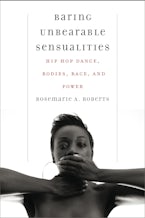- Home
- Wesleyan Dance
- performing arts
- history
- An Empty Room

An Empty Room
Imagining Butoh and the Social Body in Crisis
Series: Wesleyan Dance
Sales Date: 2022-05-03
Reinterpreting butoh's history to reimagine its future
An Empty Room is a transformative journey through butoh, an avant-garde form of performance art that originated in Japan in the late 1950's and is now a global phenomenon. This is the first book about butoh authored by a scholar-practitioner who combines personal experience with ethnographic and historical accounts alongside over twenty photos. Author Michael Sakamoto traverses butoh dance history from its roots in post-World War II Japan to its diaspora in the West in the 1970s and 1980s. An Empty Room delves into the archive of butoh dance, gathering testimony from multiple generations of artists active in Japan, the US, and Europe. The book also creatively highlights seminal visual and written texts, especially Hosoe Eikoh's photo essay, "Kamaitachi," and Hijikata Tatsumi's early essays. Sakamoto ultimately fashions an original view of what butoh has been, is and, more importantly, can be through the lens of literary criticism, photo studies, folklore, political theory, and his experience performing, photographing, teaching, and lecturing in 15 countries worldwide.
Acknowledgments • Preface • Introduction: (My) Butoh • Chapter 1: Developing a Practice • Chapter 2: Imagining Innocence Lost • Chapter 3: An Empty Room • Chapter 4: Desire • Chapter 5: Trickster • Chapter 6: In the Soil • List of illustrations • Notes • Bibliography • Index
MICHAEL SAKAMOTO (Amherst, MA) is an internationally recognized butoh and dance theater artist and Performing Arts Curator and Director of the Asian and Asian American Arts and Culture Program at the UMass Fine Arts Center.
"Very few dancers since Hijikata Tatsumi have taken more fully to heart the dictum of butoh to critically examine your self, ethnicity, and even your own artistic practice than Michael Sakamoto. Sometimes treading in Hijikata's very footsteps, Sakamoto has delved into the complexity and created fictionality of his Japanese American identity. This journey is simultaneously an attempt at defining, critiquing, and empowering the dance form butoh so that it can continue to be at the center of our global attempts to negotiate the ever-present crises facing humanity, just as it was at the center of Hijikata's efforts to face the maelstrom of postwar Japan."
~Bruce Baird, professor, University of Massachusetts-Amherst
"Sakamoto takes seriously the imperative, 'find your own butoh,' and in so doing moves through and beyond his own practice to imagine a generative butoh available to individuals and communities as a kind of resistive cultural commons. An Empty Room is at once a major contribution to butoh scholarship as well as a model for a rigorous and rousing praxis on the page."
~Rosemary Candelario, author of Flowers Cracking Concrete: Eiko & Koma's Asian/American Choreographies
""The text digs deeply into butoh based philosophy and its application to bodily research, an approach largely absent from other English-language butoh scholarship.""
~Megan V. Nicely, Dance Chronicle











